Scooters Were Popular, But Will They Return?
Scooter ridership set records in 2021. Alderman floats pathway to bring them back.
The dockless scooters that dotted Milwaukee’s streets last year were popular, but there are no immediate plans to allow them to return.
A new Department of Public Works report quantifies the scooters’ usage and public sentiment, but doesn’t make explicit recommendations on how to proceed after a 2021 pilot study concluded. A pilot study, which allowed Bird, Lime and Spin to operate in Milwaukee, was also conducted in 2019.
The total number of rides would have been higher, but a ban on scooters in the downtown went into effect on August 3. This happened after a city-hired consultant found more than 10% of riders were riding on the sidewalk. The ban prohibited operators from allowing riders to start or stop in what the city called “Zone 1,” the downtown area.
“The Zone 1 prohibition had a significant impact on overall ridership. Total rides in August dropped to 70,558, or 44.5% of July’s 158,662, and continued to decrease in subsequent months,” says the report. As a result, the Lower East Side was the most popular area for trips. The city was divided into seven zones in an effort to encourage equitable scooter distribution.
The average ride time was 10 minutes, with an average distance of 0.9 miles. Each individual scooter, rentable with a smartphone application, was used an average of 2.6 times per day. The companies were each allowed to deploy up to 1,000 scooters in the city.
In 2021 DPW received 89 comments about the pilot study and the mayor’s office received 13, down from 141 and 243 respectively in 2019. The report indicates virtually all of the comments were complaints and declined throughout the study period. The city website also directed individuals with complaints about specific scooters to call the applicable operator directly.
The city collected $179,563.35 in fees, including $75,000 from a $25 per scooter fee, $72,763.35 from a $0.15 per trip fee, $30,000 from a $10 per scooter fee for the third-party consultant and $1,800 from a $300 per operator applicable fee. DPW officials initially believed up to $350,000 could be collected and much of it used to build bike lanes and other infrastructure for scooters.
Bringing The Scooters Back
Common Council approval is required to reauthorize the scooters. But there are not currently any proposals pending to issue another pilot study, nor is DPW recommending one at this point.
“I think they’re exploring some alternative models for doing it, which have promise,” said downtown Alderman Robert Bauman, who has traditionally been one of the most vocal skeptics of the scooters and created the 10% sidewalk riding ban threshold, in an interview.
He said different options being considered include having only one operator, establishing a local partner or operator and charging a flat fee per scooter to that operator.
Would he support that? “Potentially.”
Rider Survey
An online survey circulated by DPW, and reshared by the media and the scooter companies, yielded 5,428 responses, 49.4% of which were people that had never ridden a scooter.
The biggest concern of non-riding respondents was sidewalk riding. For those who had taken at least one scooter trip, the greatest concern was there isn’t a safe, connected network of trails and bicycle infrastructure to ride in.
Slightly more than three-thirds of trips (70.2%) were for transportation purposes, not joy riding, according to the survey responses.
Nearly half the respondents, 48.3%, had an unfavorable view of the downtown riding prohibition, but 33.9% of respondents favored the ban.
Permanently legalizing scooters is supported even by those that never ride them. Only 51.2% of survey respondents that had never ridden a scooter favored permanently prohibiting them. More than 70% of all respondents favor legalizing them in some way. Those figures were similar to what the 2019 survey found.
Sidewalk Riding
Each company operating in Milwaukee integrated technology into its scooters to detect sidewalk riding. But it wasn’t entirely effective. The third-party consultant found that 25.5% of all riders observed over three visual monitoring periods were riding entirely on the sidewalk.
Bird relied on a GPS-based technology. Approximately half of its scooters had the technology by fall 2021, with scooters eventually stopping if sidewalk riding continued on a trip.
Spin used a camera mounted on 100 of its scooters to detect sidewalk riding, with an audio alarm that went off until a rider returned to the street.
The city installed 58 on-street parking corrals for scooters primarily in areas just north or south of Downtown. They were funded with money from the city’s $65,000 settlement with Bird regarding its unauthorized 2018 deployment of scooters. The on-street corrals are intended to reduce situations where scooters are obstructing sidewalks when parked, a concern that increased in 2021, according to a survey.
The requirement to add 100 adaptive scooters per operator proved to be an issue for every operator according to the report. “These challenges included supply chain issues, the short time frame to incorporate adaptive scooters, and the need to develop stronger local partnerships,” says the report. The adaptive scooters demonstrated were vehicles with seats.
A full copy of the report can be found on Urban Milwaukee.
If you think stories like this are important, become a member of Urban Milwaukee and help support real, independent journalism. Plus you get some cool added benefits.
Transportation
-
MCTS Adds 28 New Buses
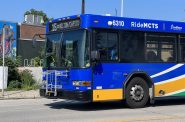 Jul 13th, 2024 by Graham Kilmer
Jul 13th, 2024 by Graham Kilmer
-
MCTS Designing New Bus Shelters
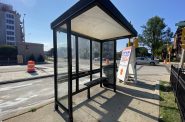 Jul 10th, 2024 by Graham Kilmer
Jul 10th, 2024 by Graham Kilmer
-
MCTS Updates RNC Bus Detours To Better Serve Downtown, Riders
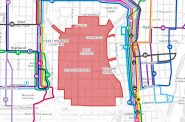 Jul 9th, 2024 by Jeramey Jannene
Jul 9th, 2024 by Jeramey Jannene


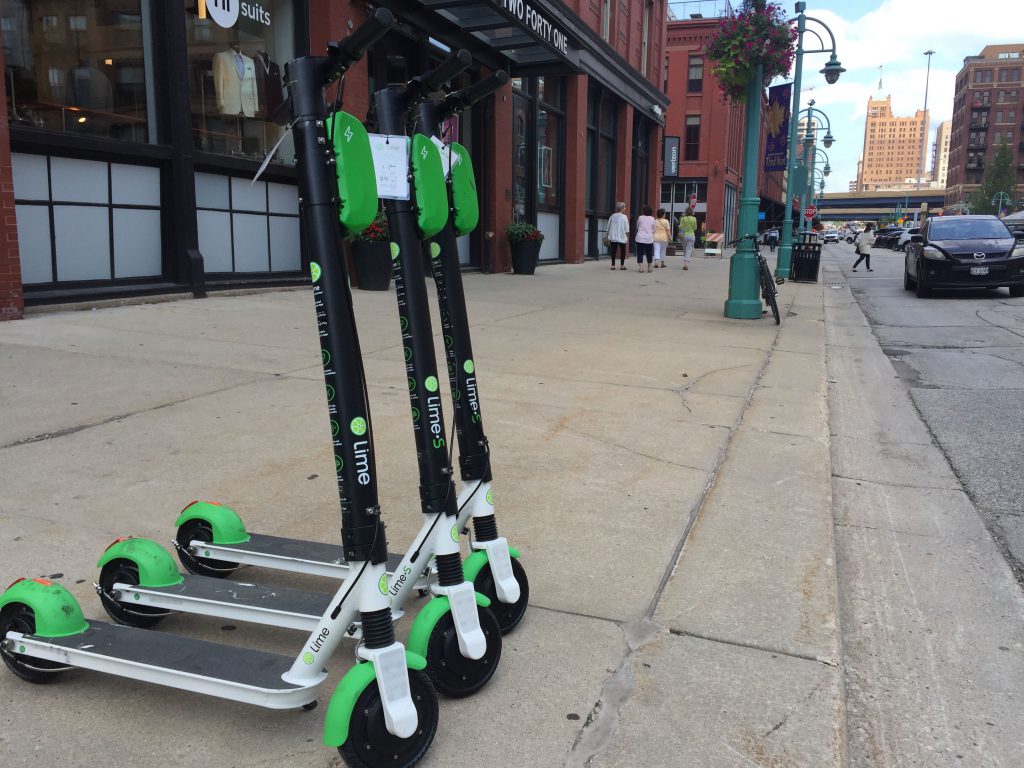


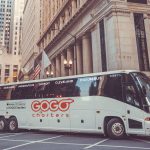
















Without appropriate levels of enforcement aimed at keeping these vehicles off of our sidewalks, their return is a questionable idea. And since only a small fraction of traffic violations are currently penalized (due in great part to a lack of police personnel available to do so) allowing the continuation of scooters without stricter enforcement presents an ongoing hazard to pedestrians.
The expectation that scooter users will finally decided to conform to the legal limits requiring them to stay off our sidewalks, if reauthorized, is belied by the number of near-collisions I’ve witnessed over the test period they’ve been granted.
A convenient form of transit? Yes. Carbon free and eco friendly? Absolutely. But, likely to lead to injuries due to scofflaws? Without question.
gerrybroderick: I understand your logic, however that same logic and conclusion can be applied to vehicles exceeding the speed limit downtown & vehicles driving in the bike lanes to pass cars turning left at every intersection. Both of these are violations, yet nobody seems to be concerned about these scofflaws.
Additionally…. I’ll pivot to state that the same logic & same level of scrutiny MUST be applied to Bublr Bikes. Bicycle riding on city sidewalks is illegal, however the common council gives no concern to Bublr Bikes when they are drafting these ad-hoc rules each year. Enforce the same sidewalk monitoring rules, the same sidewalk rider notification requirements, and the same sidewalk penalties for Bublr Bike rentals & scooter rentals.
a few recs to the Common Council after reading the 2021 study.
#1) to address sidewalk riding
stop beating around the bush & treating the violators like precious little flowers.. which means, instead of the friendly warning tag on the scooters about sidewalk riding, change to a notification that you will be fined $10 if this scooter operater’s software detects that you are riding on a sidewalk.
And instead of a happy reminder about sidewalk riding when user opens their app, the scooter unlock button on the app needs to include user acknowledgement of Mke Code 102.7 rules & consent to be charged $10 to cover the violation when the software detects sidewalk riding. the city could evaluate fining the scooter company’s who in turn automatically charge the rider’s credit card.
Use the current laws & technology. don’t waste any city resources trying to issue tickets that will never get paid, simply include the fines as part of the master agreement with the 3 scooter companies.
#2) the survey is pretty worthless in its current form without any verification of who is responding/submitting it. especially when 50% of respondents are 0 riders.
to make future surveys valid, do 2 simple things. for respondents that have taken a scooter ride, a survey login code can be generated through the scooter app.
for the 0 riders, require valid city address & then a 2fa text login to submit their completed survey response.
The majority of survey responders were strongly opposed to the zone 1 ban. and the majority of 1 or 2+ riders were strongly opposed to the ban. the survey results show that it was the 0 riders who were the vocal minority that were strongly in favor of the ban. The lazy journalists in our city media all took the bait. And they all duped Bob Bauman into blocking Zone 1. And in the end it cost the city $100k to $150k of lost user fees.
and the 2021 report states that 1/3 of the survey responses declined to include their zip code??
It is very concerning when city leaders are setting policy based on this type of unverified user survey.